Productive Rant About Time Management Strategies
From the desk of a brilliant weirdo #1:
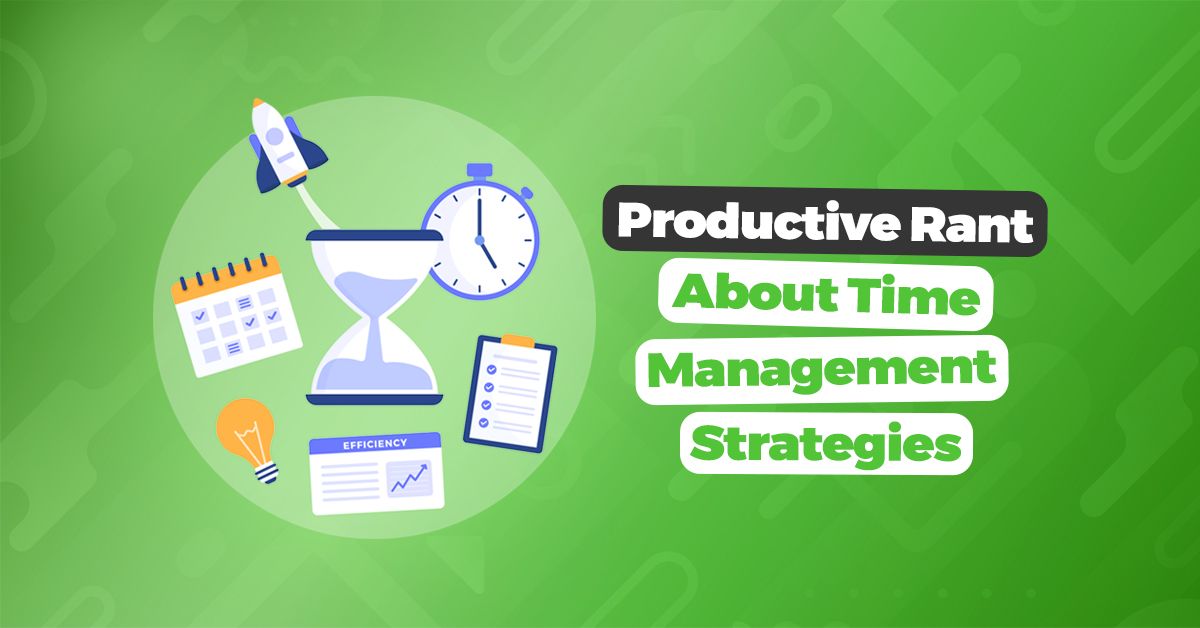
From the desk of a brilliant weirdo #1:
Whether you are about to skim through this post or read it from top to bottom, I wanted to take a moment to say THANK YOU for checking out this article. I appreciate every reader who comes to my articles. I really do hope you find a useful nugget of information about time management strategies that you can use either in your personal life or at the workplace.
Now that I was able to cajole you into reading further (hopefully), let’s get down to it.
What’s the deal with time management strategies?
Why is time management important? Common sense is that time management methods bring a lot of benefits to the table:
- With effective time management strategies and techniques, you feel more in control of your day. You won’t be stressed as much, neither you’ll feel burned out.
- With the proper time management methods, you can become more productive and build a more sustainable work-life balance (though, I personally think that work-life balance is BS. There are work/life decisions you make, and they have consequences.)
- Using efficient time management techniques will allow you to make the most out of your day by helping you to stay focused on the essential tasks you need to complete.
But…
It’s really about procrastination, not time management.
And when it comes to procrastination, we’re talking emotions.
The tasks we avoid doing make us feel bad; maybe the task is boring, tedious, or simply difficult. Therefore, we do something else (binge-watch Netflix or play computer games) to make us feel better.
But what happens is quite the opposite.
Indulging ourselves into short-term pleasure instead of work gives birth to guilt. It’s an endless and dreary cycle of misery.
A 2000s investigation about the relation of procrastination to emotion was led by experts at Case Western University in Ohio. The researches made people read drama or sad stories. As a result, their mood was darkened and sulked. This led to higher levels of procrastination. Instead of preparing for their exam, they would delay studying as long as they could.
Later, it was deduced by the same team of researches that procrastination increases when enjoyable activities are available as a distraction, and if people believe they can change their moods.
Another study by the same team proved that people stop procrastinating when they aren’t in a bad mood; ”mood-freezing” candles were used to trick the same volunteers into thinking that their mood was “frozen.” They stopped procrastinating afterward.
Conclusion: You gotta eliminate all pleasurable distractions surrounding you. Otherwise, you’ll resort back to watching videos or playing games, even if you don’t particularly like them, when there’s a difficult task at hand.
The solution to the problem of procrastination is a cliche…
Just get started
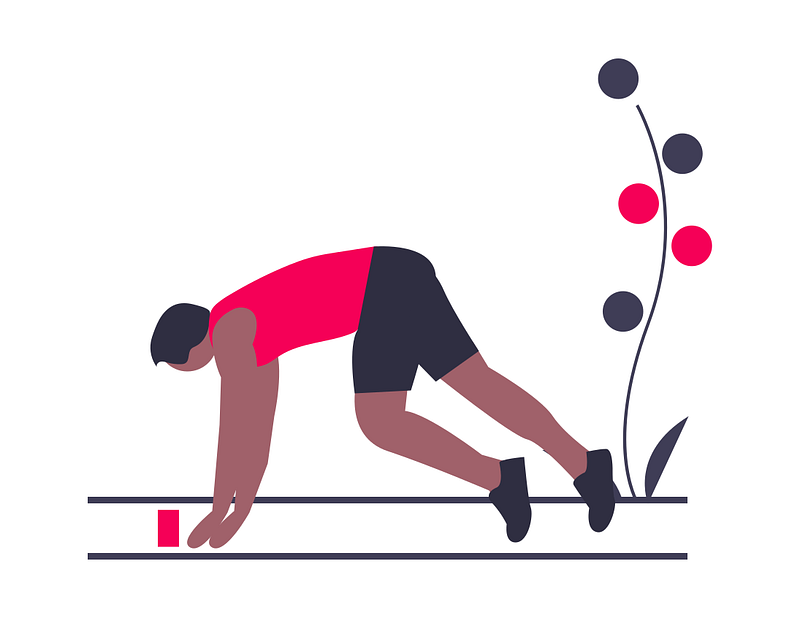
Focus on one thing at a time. Be present at the moment. Don’t think about all the tasks you need to complete. Instead, focus on the job you have to handle right now.
It’s proven that when you focus on one small thing, you take your mind off your feelings and direct it to action.
For example, as I’m writing this article, I won’t focus on how much I’ve left as I’m just in the beginning and will probably stress out when I find out that I’ve shit tons of more to write. Instead, I’ll focus on the sentence I’m writing right now (sometimes, I’ll focus on each word).
“Move your eyes away from the email you are writing, the paper you are reading, or the excel sheet your team has prepared for Q3, then after counting to 20, resume back and continue with the project you are working on. If your brain is completely focused, you will get the job done in less time with higher efficiency.” — Dr. Pooneh Ramezani, CEO at Dr. Brite.
You can also come up with other creative ways to handle your work; pleasure in a different form. When I write articles like this, I put on my AirPods and blast World of Warcraft ambiance music at low volumes. Ah, I love it.
It doesn’t work with any type of music though. You should avoid listening to lyrics because it’s the equivalent to multitasking. Multitasking is the biggest killer to productivity and getting shit done; it can drop your productivity down to 40%. (barring you are Elon Musk).
“The painful truth is that a scant 2% of the population can effectively multitask, the rest are failing to one extent or another.” — Ken Eulo, Founding Partner at Smith & Eulo Law firm.
When fighting with procrastination, there are certain things you can use to put the odds in your favor:
Take care of yourself
If you feel bad, hungry, or even depressed, you’ll have a hard time getting yourself down to work. Take care of yourself — eat well, sleep well, and, of course, make time for pleasure, be it playing video games or binge-watching Netflix.
Rewards
Perhaps the oldest trick in the book; reward yourself after doing hard work. I used to do grunt work for 2–3 hours straight in the morning, but then I’d indulge myself in 30 minutes of watching UFC videos. It helps, no doubt about it.
Regulate emotion
As we’ve already clarified that procrastination is due to emotion, you can regulate your mood with motivational talks, autobiographies, or music.
For me, the Imperial March from Star Wars works great.
You can also picture what would happen if you don’t do the work. There’s a reason why parents make their kids do stuff by telling them what would happen to them if they don’t comply — “brush your teeth or they’ll fall out.”
Also, when you tell yourself “just one more word,” “just one more sentence,” or “just one more paragraph,” you end up doing a lot more work. Try this with all of your tasks — “just one more line of code,” “just one more rep,” “just one more page of reading,” etc.
Ultimately you gotta know…
What’s your purpose in life

You have to follow the things you have passion for, do the things you love. Because, regardless of whatever time management strategies and techniques you use, you’ll never feel genuinely happy if you do stuff you don’t enjoy. You’ll go through your life by just checking boxes on your to-do list without really achieving anything.
Doing the things you love will not only bring joy and help you get through procrastination, but it will aid you in overcoming difficulties as well.
Figuring out the thing you have passion for, however, is very difficult; you shouldn’t beat yourself up for struggling to find your joy for something.
The process of finding your real purpose in life can be messy, chaotic, and unpredictable. (Damn, I’ve tried a couple of things so far thinking that I had found my real passion at last, but after a few months of doing those things, I get bored. Guess, you gotta keep searching lol).
Regardless, you always have to keep moving towards something; it’s not about the destination, it’s about the journey. As long as you’re making progress, you’re doing great.
Anyway, I digress.
You need to have your long-term goals set and work every day towards achieving them.
It’s hard to keep up when your goals are 10 years ahead of you tho, and you can’t see tangible progress being made on a daily basis.
You should balance your long-term goals with short-term pleasure to blow off steam and re-energize.
Take a look at video games for example. Why are video games so addictive…
…especially World of Warcraft?

Video games set a goal in front of you, a goal that you are emotionally attached to. And then map out each step of the way helping you to achieve that goal. You level up, upgrade your skills, acquire new armor, see actual progress being made daily.
Compared to real life, you can’t map out every single step of your 10-year goal plans. Sometimes, you won’t see tangible progress for days or even months which can be discouraging. That’s why it’s hard for most people to stick to their goals for long periods. Life isn’t a straight line.
Emotions aren’t everything though
You have to regulate your energy to manage your time better. Every single thing you do either drains the energy out of you or gives you some.
Things you don’t like, obviously, drain the energy out of you; things you like, on the other hand, pack you up with energy. Yet, doing anything for excessive periods of time is bound to drain out your energy.
After working on something for 20 minutes straight, the difference is whether you are gonna look at the clock every 5 minutes or be heavily immersed in the thing you’re doing, spending hours on it without even realizing it.
If you aren’t careful with your energy, you’ll end up…
…Burned out

I believe that every person has experienced it.
You feel tired, confused, out of your mind, you know the drill.
While some people say that you can’t burn out by doing the things you love and achieving success, others think otherwise.
Well, I don’t know whether that’s true or false. I have no science to back up myself. So, I’ll propose a theory:
I think that burnout can be a protection mechanism telling us to stop a behavior that’s unhealthy and painful.
It’s like when you’re doing a deadlift and your back starts hurting. The pain in your back (the burnout) tells you that if you continue doing what you’re doing, you’re gonna break your back.
How to preserve your energy and be more productive?
The decisions you make every day play an important role in preserving your energy to avoid burnout.
Every decision you make drains some energy out of you, regardless of how small it is.
Try to automate as many decisions as you can.
For example, write your to-do list for tomorrow this evening so you don’t have to think about it tomorrow and waste energy.
Write down what clothes you like to wear, and make a raiment schedule for the week. Thus every day, after waking up, you won’t have to spend time thinking about what to wear today; you can simply look at your list and get dressed without making any unnecessary decisions.
Don’t overthink simple things like buying groceries, books, or something else. Just go and do it. Save your thoughts for the actual work.
“At the end of each day I simply pick the most egregious item that needs to be covered off, and I make sure it’s done and dusted first thing the next day without fail. This is a simple way of maximizing the time spent — and energy expended — on every other task that I perform that day. My time goes further when the biggest problem is no longer hanging over my head.” — John Bedford, founder and editor of Viva Flavor.
No Breakfast

Stop eating breakfast.
Personally, when I wake up, I won’t eat until lunch.
Having your stomach full in the morning will make you feel tired; you won’t even have the slightest motivation to handle work. The stomach drains energy out of you as it needs it to digest food.
“With a clear head and gut, I find it easy to get through my to-do lists and don’t feel sluggish. I would definitely recommend implementing probiotic rich foods into your diet for increased mental clarity and better time management.” — Alicia Harper, blogger at ProbioticReviewGirl.
The what, when, where and how of your work.
You’ll enjoy doing some things in the evening more than in the morning.
Sometimes, you’ll prefer to work in a coffee shop than being welded to your work chair.
Other times, you’ll be fed up with your co-workers’ BS and prefer solitude.
In other cases, after being sick and staying at home for 2 weeks, you’ll crave your teammates’ collaboration.
It’s different for every person — you gotta find the things that work for you and do them.
Don’t let anybody else tell you what you should be working on, when you should be working, or how you should be working.
Time management strategies of the day
Whether you are a college student or a manager who seeks time management solutions to plan and organize your day to work efficiently, the following time management strategies, techniques, and tips are some of the best you can receive.
See where all your time goes
Here’s an exercise for you. Take a pen and paper. And for the next 7 days write down what you do every single hour of the day. The results will amaze you. After that, you’ll be able to schedule your day much more effectively.
Understand the Planning Fallacy
Planning Fallacy is the tendency to underestimate how long a task will take you to complete it.
It’s a terrible mistake when it comes to practicing efficient time management strategies. It can screw up your day to day plans heavily.
You might think that you’ll need 8 hours to finish a project. A workday consists of 8 hours, right? So you think you should wrap it up in a day.
Yet, you aren’t sitting on your desk for 8 hours straight welded to your chair.
No.
You take breaks, have lunch, talk to your colleagues, and do various other stuff. Realistically, the 8 hours of work are reduced to around 5–6 hours of work per day, I’d say.
Therefore you’ll need not one but two days to finish your project.
Research shows that the average person is productive for only 12.5 hours a week, about 2.5 hours per day. And if your “8-hour” project requires a lot of thinking, you might need more than 2 days to complete it.
Keeping the Planning Fallacy in mind will allow you to allocate more time for your tasks and thus schedule your time better. You’ll basically have the time to do it right and do it better because… the way you do anything is the way you do everything.
Set smarter goals
Setting the right goals is the bare bones of effective time management. It’s a crucial time management skill that, if neglected, results in poor time management which can lead to stress, guilt, and misery.
What you gotta do is break your daily goals into smaller 30-minute tasks so you don’t have to look at the clock every 2 minutes gasping and wondering how much time there is until the break.
You can find the Pomodoro technique quite useful too — spend 50 minutes working and 10 minutes resting. Repeat.
You can also use calendar views instead of to-do lists. Some people say that they have significantly improved their time management by switching to calendar views.
Prioritization
If you don’t know how to prioritize your goals, you’re in big trouble. You’ll be working on tasks that average 3 on a “0–10” scale of importance. Thus you’ll never be able to ship an MVP when you’re running out of time.
Scott Berkun talks a lot about prioritization. Definitely check him out if you want to learn how to prioritize your day flawlessly.
He talks about dividing your tasks into two groups.
A-class tasks and B-class tasks.
Take, for example, the construction of a car. A-class items would be the chassis, the engine, the tires, the transmission, and a few other items I guess, I’m not a car expert. B-class items would be the doors, windows, radio, AC, etc.
Although, driving a car without B-class items will result in extreme discomfort, you can still drive it. Without A-class items, you can’t drive the car.
Knowing how to prioritize your tasks is a good time management skill for getting control of your time.
Have you heard of the Pareto Principle 80/20?
Course, you have. It’s valid for everything you do.
20% of your efforts produce 80% of your results.
The numbers may vary in different situations; they aren’t set in stone, but mainly circle around 20 and 80.
Make a list of the most important tasks and then put all your efforts into these tasks so you can yield the biggest results.
The Eisenhower Matrix
Using the Eisenhower Matrix is one of the best tips you can get on managing your time at work wisely.
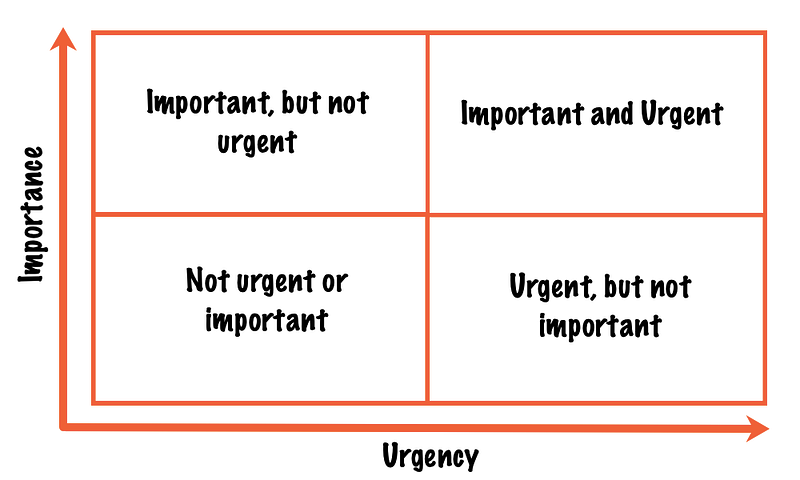
- Important and urgent — the tasks in this quadrant need your fullest attention and have to be completed ASAP.
- Important and non-urgent -Tasks you gotta do but not necessarily right now.
- Not important but urgent — mostly distractions that hold you back.
- Not important and non-urgent — get rid of these.
Delegate
If something can be done 80% as well by someone else, delegate it! It’s one of the most efficient time management activities to make more time for your personal or business life.
The following math is borrowed by the book Procrastinate on Purpose by Rory Vaden.
The book proposes that we spend 30x the amount of time it takes to finish a task to train somebody else to do it.
Say, a task takes you 10 minutes to complete.
30X that time is 300 minutes for training somebody else to do it. Yes, it seems like a huge waste of time at a glance but consider this: multiply the initial 10 minutes a day across the 250 annual working days and you’ll end up spending about 2500 minutes a year on that task.
300 < 2500.
By training someone else to do it for you, you can save up to 2200 minutes per year — almost 37 hours.
Learn to say NO
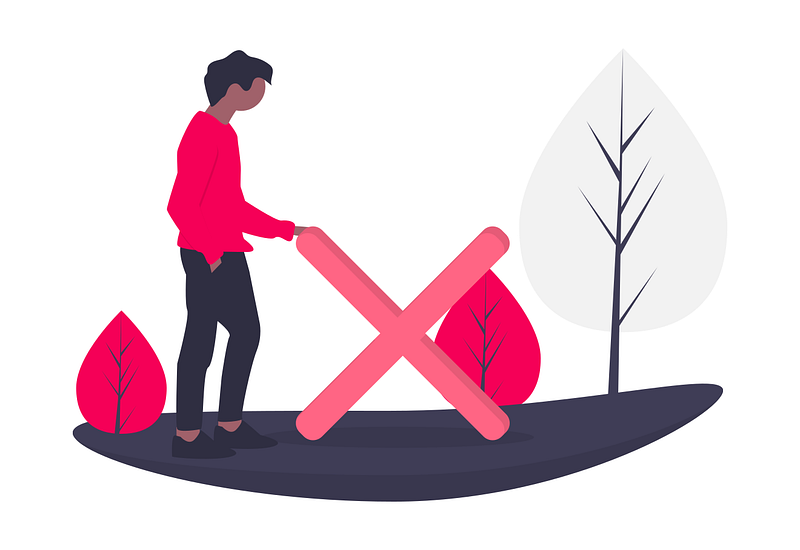
An invaluable tip on time management. Let’s explore a few cases:
- Saying NO to a friend to hang out. There’s really no secret sauce for declining a bevvy with your friends. You’ll always feel like you’re missing out. You gotta know whether hanging out with your friends or working towards your goals is more important to you. If the latter, just say no, apologize, and say next time. It sucks but you gotta do what you gotta do.
- Saying NO to your boss. This can be hard. You really can’t do anything if your boss has made his mind up. If that happens frequently tho, I recommend that you look for a new job. If not, politely explain to your boss that you have other important stuff you’re working on; tell him how bad it will be if you don’t finish your tasks in time.
- Saying NO to a coworker. I guess it depends on your relationship with your coworkers. If the guy asking you for a favor is generally a dick, saying NO is gonna be easy. Yet, if it’s someone you have reverence for, be transparent with him by sharing your to-do list. Simply apologize and continue working on your stuff.
You really gotta master this one cause saying YES to everything is bad management. Sometimes, it’s better to be ruthless and disliked to a degree than to be overwhelmed with your colleague’s requests.
Always finish what you start
I guess, you’ve been told that you always gotta finish what you start. Never leave something unfinished.
I’d say that’s partly true, partly not.
You see, it’s true because sometimes the things you leave unfinished will linger in your mind, prod your nerves, and vex your thoughts until they’re finished.
On the other hand, however, leaving something unfinished on purpose can help you keep your momentum going.
At times, I find it hard to start a new task when I’ve completed my previous tasks. I’ve got that feeling of satisfaction, so I don’t really push myself.
Yet, when I leave something unfinished (for example a paragraph or a section of this article), I can continue from where I left without thinking much about it and get into flow immediately.
You gotta find what works for you.
Build a morning routine
With the right morning routine in place, you can set yourself up for a highly-productive and effective workday. Your morning routine will definitely differ from every other person’s morning routine. Still, there are a couple of common things that are useful for any person:
- Don’t snooze. That really was a game-changer for me. Even if you feel groggy and dazed after opening your eyes, you shouldn’t go back to bed. Instead, stay in your bed for another 10–15 minutes sitting. This really wakes me up. Try it.
- Meditate. Tried it. Didn’t really work out for me as I can’t stand myself sitting still for 30 minutes and doing nothing lol.
- Start with something you love. Elon Musk (check his daily routine below) loves showers. I start with some WoW music.
- Exercise. It’ll wake you and pump you up.
What about Elon Musk’s daily routine?
Here’s what I was able to find:
- Elon sleeps on average 6 hours a night, going to bed at 01:00 am and waking up at 07:00 am.
- When asked whether he eats for breakfast, Elon said he skips it.
- What’s interesting is that he always makes time for showering. It impacts him more positively than any other of his daily habits.
- Musk works between 85 and 100 hours each week.
- On Mondays and Fridays, Elon is at SpaceX in LA. The rest of the workdays he spends at Tesla in the Bay Area. According to Quartz, about 40 hours of Elon’s time go into SpaceX and another 42 hours going into Tesla.
- “When is he able to spend time with his family?” I hear you scream. He has 5 children and he takes them with him on most of his business trips.
- The typical day of Elon Musk consists of 5-minute time boxes.
Work with your body, not against it
When it comes to effective time management, really, the best “productivity” tip anyone can give you is to do the things that work best for you.
A night owl? Cool.
An early riser? Cool.
Work better at night? No problem.
Work better in the morning? Go for it.
Some people have high energy in the morning while others at midnight. I for example feel quite energetic 1 hour after waking up. Others can’t gather their thoughts until 2–3 pm.
Block out as many distractions as you can
Turn your notifications off, or maybe just turn off your phone.
If you are working from home, put a “Do not disturb” sign on your door or tell your family not to disturb you for X hours.
Keep your desk clean. Remove the needless apps from your laptop; close the 20+ tabs you have open in Chrome.
Minimizing distractions as much as possible will definitely help you to be laser-focused.
Don’t forget Mother Nature

Our bodies crave sunlight and fresh air so we can function better. In fact, studies show that children in schools with bigger windows score higher than kids in schools where sunlight is limited.
Work within ultradian rhythms
Know your body rhythms, also known as ultradian rhythms.
These are 120-minute biological intervals that our bodies usually go through.
We are most productive the first 90 minutes of doing something; our energy slopes down in the next 30 minutes tho.
Knowing your body rhythms will allow you to plan your day to your advantage; hence work only when you’re most productive. When your energy dips, you can start working on repetitive or irrelevant tasks.
Change your work location
Whether you are at the office or home, changing your work location throughout the day can be a handy tip for keeping your productivity up and burnout away.
I’ve found it especially useful when writing.
I’ll write 1500 words on my desk, then I’ll switch over to my bed and write another batch, after that I’ll go into the living room, surrounded by kinds of books, and wrap up my article.
Here are some of the best time management books that will equip you with tons of time management tips & tricks:
1. Eat That Frog!: 21 Great Ways to Stop Procrastinating and Get More Done in Less Time.
2. The 7 Habits of Highly Effective People: Powerful Lessons in Personal Change.
3. The 4-Hour Workweek.
4. First Things First.
5. 168 Hours: You Have More Time Than You Think.
6. 18 Minutes: Find Your Focus, Master Distraction, and Get the Right Things Done.
7. Ready for Anything: 52 Productivity Principles for Getting Things Done.
8. The Happiness Trap and the Feeling Good.
9. Behavioural Activation.
Best time management tools
Of course, it’d be sinful not to make a short blurb about Codegiant in a Codegiant article. Nevertheless, I didn’t want to piss you off by cramming Codegiant blurbs throughout the article, so I decided to save it for the last.
Without further ado:
Codegiant
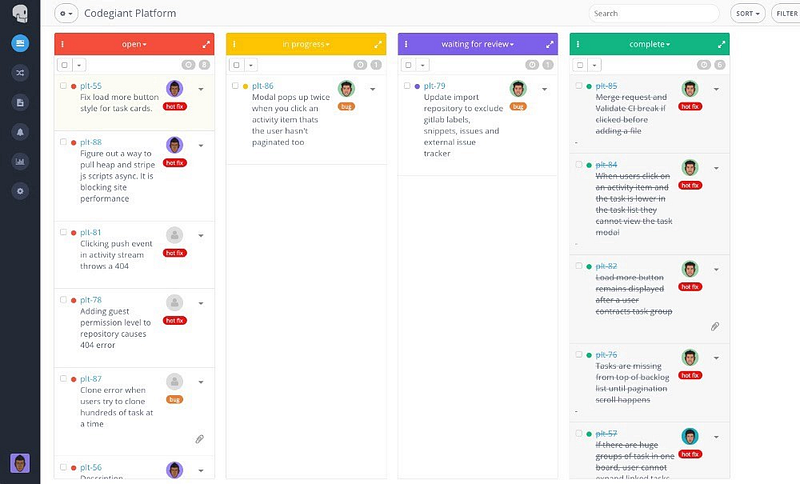
Codegiant is our simply-designed development tool that comes with a straightforward issue tracker, git repositories, built-in CI/CD, and a documentation tool.
With Codegiant, you can log in your work hours and track effortlessly where your time goes.
You also get detailed reports on your team’s performance so you know what to do in order to improve its productivity.
Codegiant is free and one of the best time management software available.
Asana
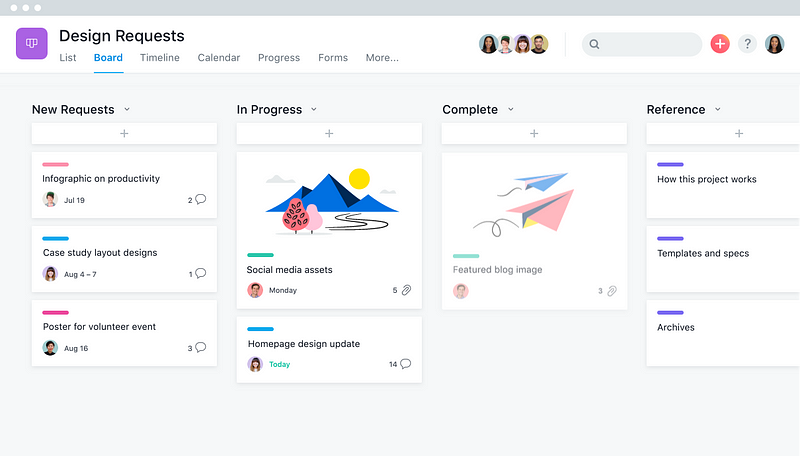
Asana comes with a time management platform called TrackingTime. As with any other time tracking tool, it tracks work hours, and it also offers in-depth spreadsheets for project budgeting, client billing, invoicing, payroll and much more. It gives you very robust time management stats on your performance.
Once you install the TrackingTime chrome extension, head over to your Asana board, and click on the tracking button displayed next to the task’s due date to start / stop timer to launch it.
Trello
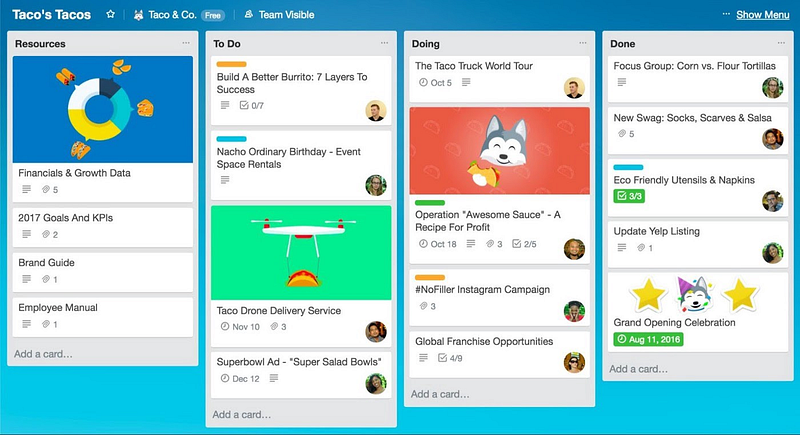
Trello is a super straightforward project management tool.
Trello features “Power-ups” that allow you to easily log in your work hours and track everything to the tiniest detail. Everything you need is located inside your Trello board.
With Power-ups, you also get access to viewing reports.
It’s best for accounting, resource planning, invoicing clients, and more. You can export your time tracking sheets in XLSX and CSV formats.
ClickUp
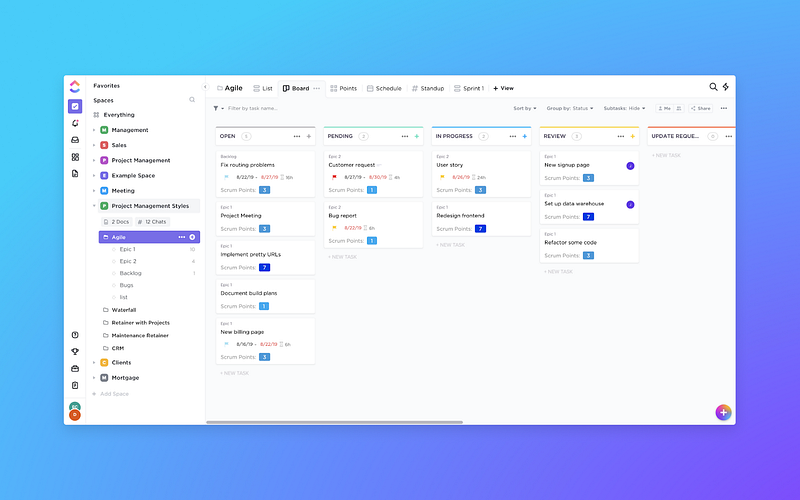
ClickUp provides numerous ways to track your work time and thus enhance your productivity. You can also integrate it with other time tracking tools like Toggl and Harvest in case you aren’t keen on ClickUp’s native time tracking and reporting tool.
ClickUp comes with a global timer, time entry details, time reporting, time tracking sorting and filtering, and edit time logged.
On the whole, ClickUp is a great time management tool that is free to use.
EmailAnalytics
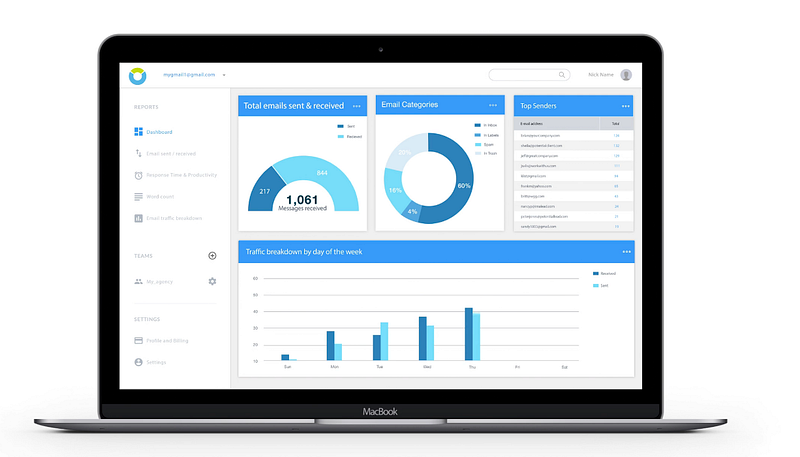
EmailAnalytics is a time management software tool that connects to your Gmail or G Suite account and visualizes your email activity — or that of your employees. This enables sales teams, customer service teams, and small business owners to measure essential productivity metrics such as average email response time, email traffic by hour of the day, email traffic volume by day of the week, and more.
You also get daily or weekly email reports so you can see how your performance is trending over time.
HiveDesk

Small businesses use HiveDesk to manage their employees’ time.
You can automatically track how much time you spend on different assignments; it helps you to clearly see where you should put your time into so you can yield the biggest outcomes.
You also get access to time management statistics to regulate your time better.
Conclusion
That’s it.
If you liked it, leave a comment. If you didn’t, leave a comment as well and tell me what I did wrong.
If you feel like I’m missing something, let me know in the comments. I’m keen on “productivity hacks” so I’ll gladly talk more about time management and stuff with you.
Stay unparalleled,
